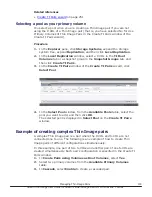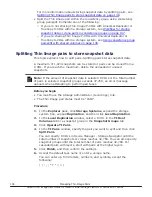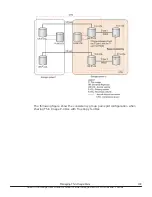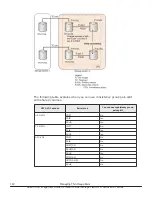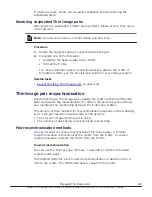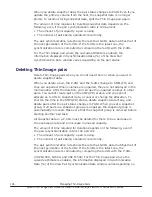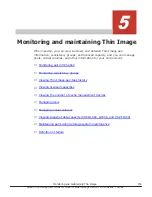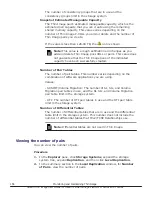
Related concepts
•
Workflow for creating groups and storing snapshot data using CCI
on
page 33
Related tasks
•
Splitting Thin Image pairs to store snapshot data
on page 136
Related references
•
on page 273
Assigning MU numbers to deleted snapshot data
Use this process to assign an MU number to deleted snapshot data.
Procedure
1.
Resynchronize the pair using forward resynchronization.
2.
Store the data for the Thin Image pair.
Related concepts
•
Storing snapshot data or cloning pairs
on page 135
Related tasks
•
Resynchronizing Thin Image pairs
on page 144
Deleting snapshot data
After writing data to a Thin Image pair volume, if the capacity of the
snapshot data exceeds the pool capacity, the Thin Image pair changes to the
PSUE status (indicating a failure occurred). In this case, you cannot create a
new Thin Image pair, therefore, you must delete snapshot data which is no
longer necessary. To delete snapshot data, perform either of the following
methods:
• Deleting Thin Image pairs
Deleting Thin Image pairs deletes snapshot data stored in a pool and
cancels the relationship between the P-VOL and the S-VOL.
• Deleting snapshot data only
To delete snapshot data only, use the
Resync Pairs
window to delete
snapshot data or restore Thin Image pairs. If you deleted only snapshot
data, the relationship between the P-VOL and the S-VOL is maintained. If
you delete only snapshot data, you can assign the MU numbers of the
snapshot data you deleted when you store snapshot data of the Thin
Image pair later. For details about the
Resync Pairs
window, see
Restoring Thin Image pairs on page 141
Managing Thin Image Pairs
145
Hitachi Thin Image User Guide for Hitachi Virtual Storage Platform G Series and F Series



